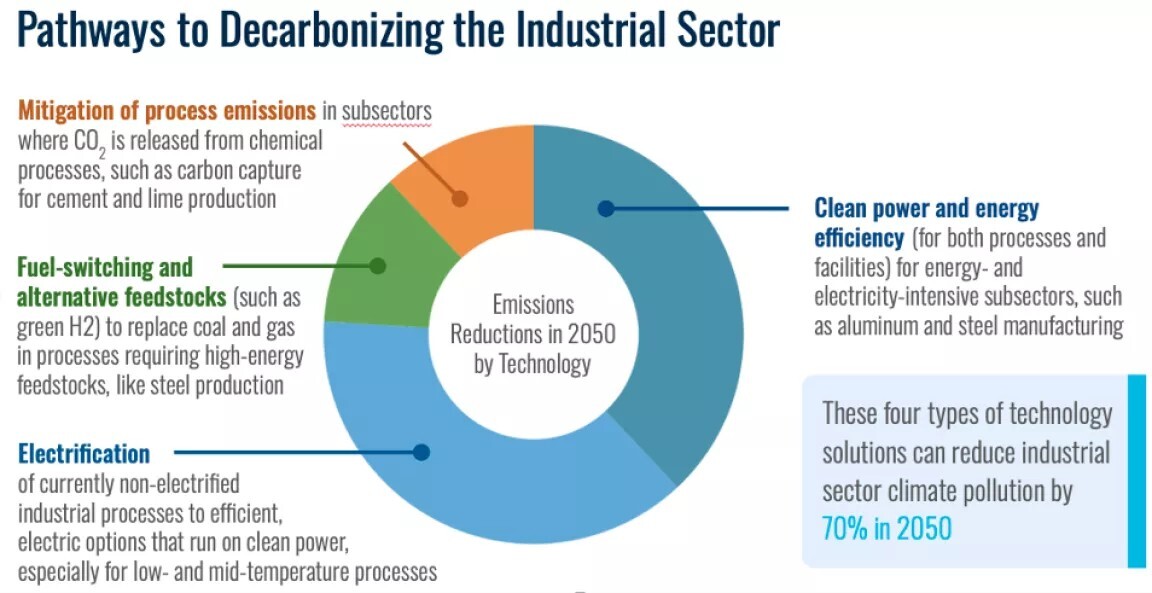From rising energy costs to increasingly stringent regulations, manufacturers now face a host of complex challenges. Carbon reduction has shifted from a discretionary ESG initiative to an operational necessity, making proactive planning and future-proofing essential.
At CFP Energy, we support manufacturers through the energy transition, providing a diverse range of products to decarbonise manufacturing, from carbon allowances within the UK ETS to biofuels and corporate PPAs.
Understanding Your Carbon Hotspots
A manufacturer’s environmental impact can usually be assessed in terms of “carbon hotspots”. These are typically divided into three scopes:
Scope 1 Emissions
These come directly from on-site activities, such as direct power generation from a microgrid.
Scope 2 Emissions
These result from the consumption of electricity generated externally.
Scope 3 Emissions
These arise indirectly throughout the entire supply chain, which often makes up the largest share of a company’s carbon footprint.
Reducing Carbon Footprint in Manufacturing
Energy monitoring systems are an important way to discover potential energy savings. By using an energy monitoring system, manufacturers should be able to identify exactly where energy is being consumed, while keeping track of consumption trends to identify areas, such as electric heating in loading bays, that may be influencing energy consumption.
Fitting LED lights, which can claim up to 50% energy efficiency, can help improve your carbon footprint, as can installing daylight and motion sensors to ensure that lighting systems turn off when not needed.
Innovations in insulation and glazing also help in reducing the carbon footprint in manufacturing. The latest triple glazing technology, for instance (soon to become the standard as part of the new Future Homes Standard), can claim increased thermal efficiency over double-glazed windows, ensuring that heat loss is kept to a minimum and artificial heating reduced.
Similarly, Vacuum Insulated Panels (VIPs), a recent insulation technology that features a vacuum inside a panel system, provides another way of ensuring enhanced thermal efficiency.
How To Reduce CO2 Emissions in Industry: Switching to Clean Energy
Switching to clean, renewable energy is by far the more reliable, long-term way for manufacturers to reduce their carbon footprint.
Power purchase agreements (PPAs) are a reliable way of doing this. Enabling the buyer to purchase power at a fixed rate over a designated period, the benefits of doing this are twofold: PPAs offer a hedge against future volatile power prices by securing a fixed energy price for a set period, while signalling a commitment to sustainability due to their emphasis on green energy, such as wind and solar power.
In addition, for many organisations, especially those without the infrastructure or capital to invest in renewable energy systems, a PPA provides a pathway to clean energy without direct investment.

How Can Manufacturers Reduce Their Carbon Footprint?
From raw materials and overstock to water and byproducts like ethylene used in plastics production, reducing carbon emissions is an ongoing problem in manufacturing. However, there are several ways to tackle this problem without significantly overhauling operations.
Firstly, segregating waste streams at the outset helps minimise the waste produced that is environmentally unproductive - i.e., which cannot be reused as compost or for energy recovery, such as anaerobic digestion.
By ensuring that waste is efficiently disposed of and recycled, where possible, manufacturers can enjoy a range of benefits that include:
- Boosted profits by saving money through better use of base materials
- Enhanced standing with clients, vendors, prospective staff, and insurers
- Enhanced ecological accountability with environmental criteria and rules
Why Carbon Reduction Matters
Although the energy emissions reductions outlined in this article may, in some instances, result in higher upfront costs, investments often pay back in 2-4 years, with savings continuing over the asset’s life.
With an increasing raft of regulations, such as the UK’s Carbon Border Adjustment Mechanism (CBAM), manufacturers must monitor the carbon emissions associated with their imports and the embodied carbon of their products. Businesses that fail to do so may incur penalties as compliance with CBAM reporting rules will become mandatory from 2027.
In addition, UK ETS mandates that manufacturers must monitor, report, and verify their emissions each year, with GHG emissions permits placing strict limits on the amount of GHGs businesses may produce.
This makes the decarbonisation of manufacturing even more important. Manufacturers that fail to cut emissions may fall foul of their legal requirements and, in the process, undermine investor confidence.
Introducing CFP Energy: Leaders in Decarbonising Industry
At CFP Energy, we stand at the forefront of decarbonisation. From identifying priority areas to delivering technical solutions, we align energy transitioning with business goals, providing specialist guidance on CBAM and the UK ETS and UK ETS2, as well as market access to contracts, like PPAs, to help you meet compliance and lower your Scope 2 emissions.
Contact our carbon specialists today to see how we can help.